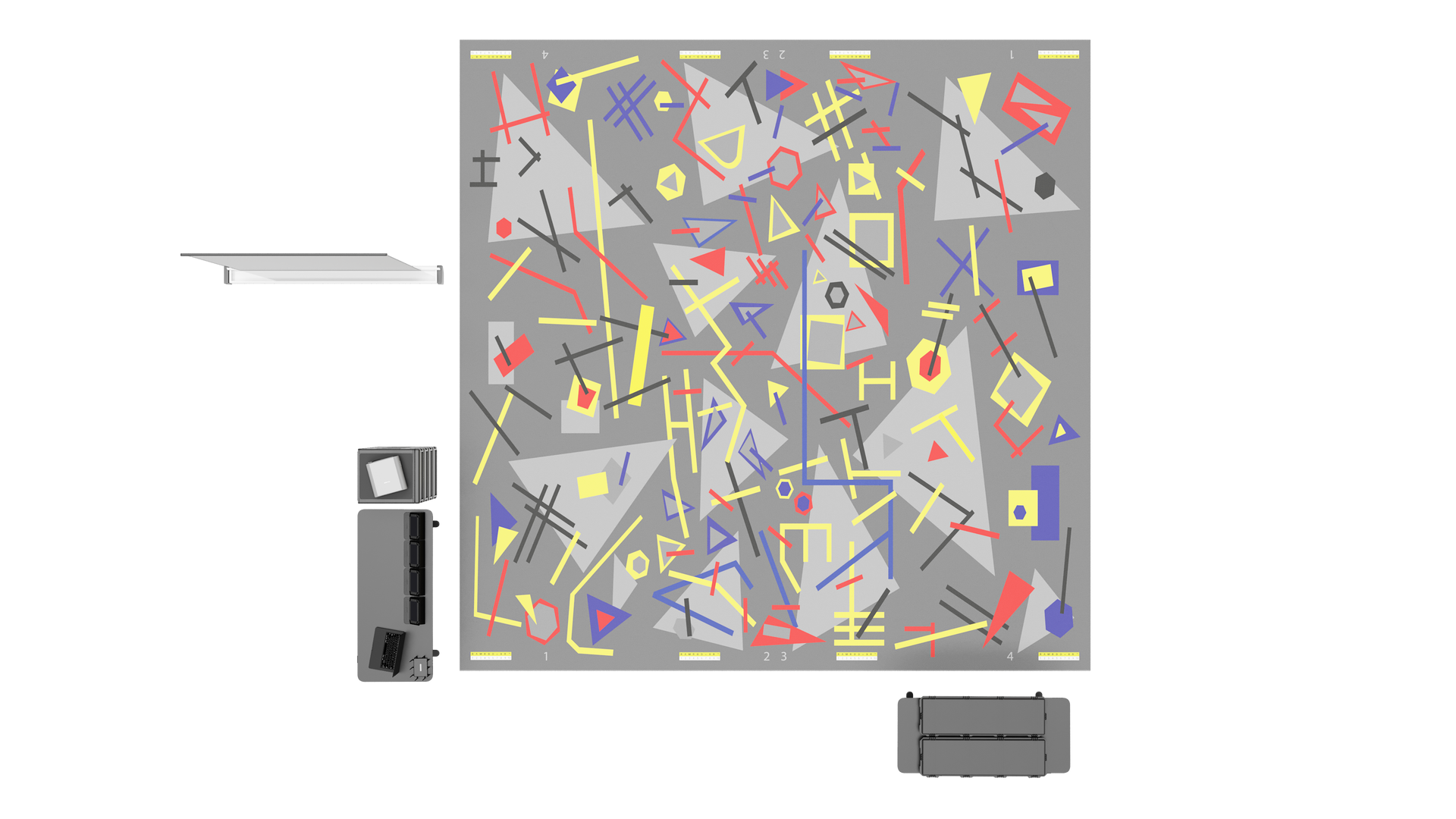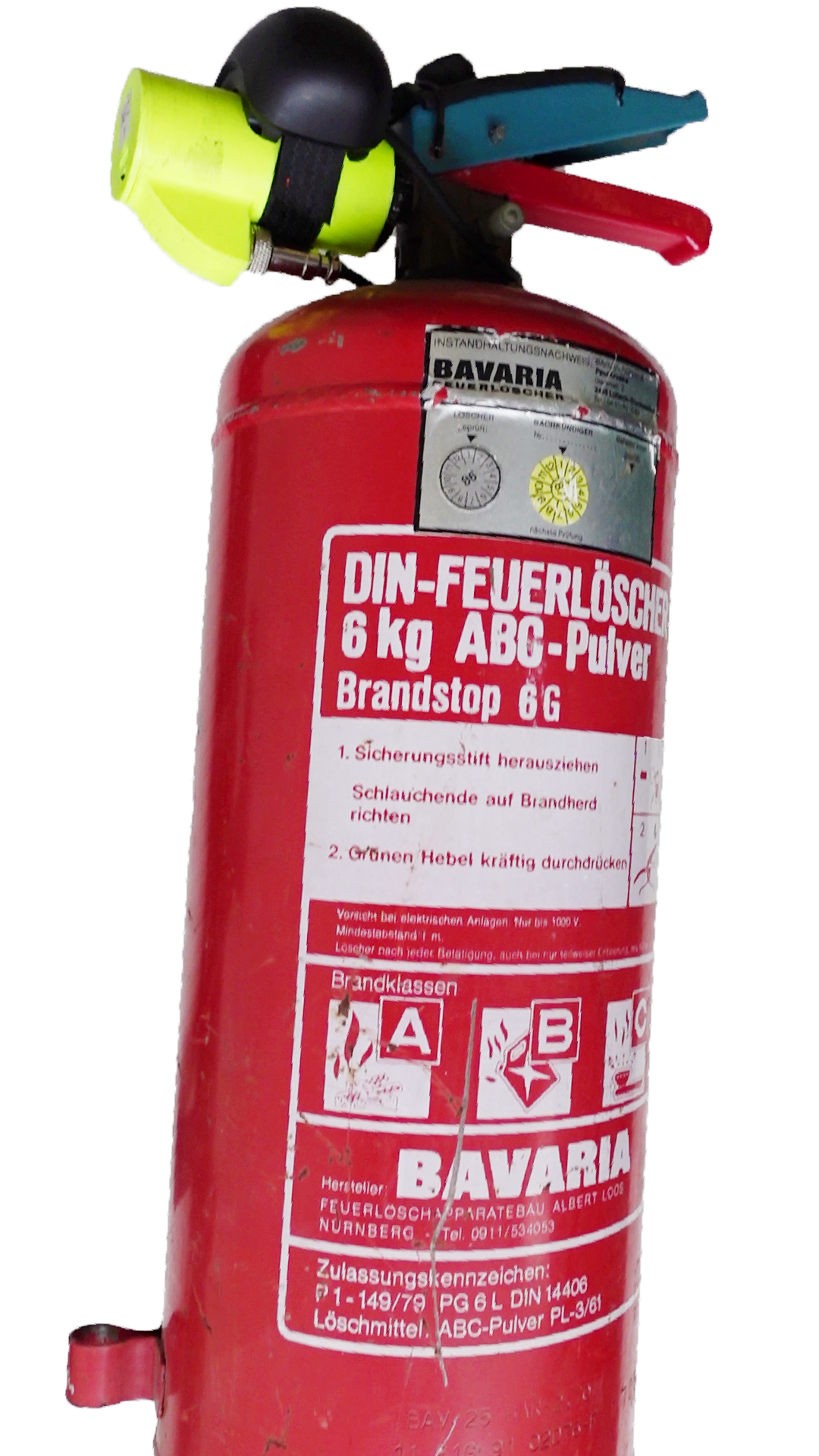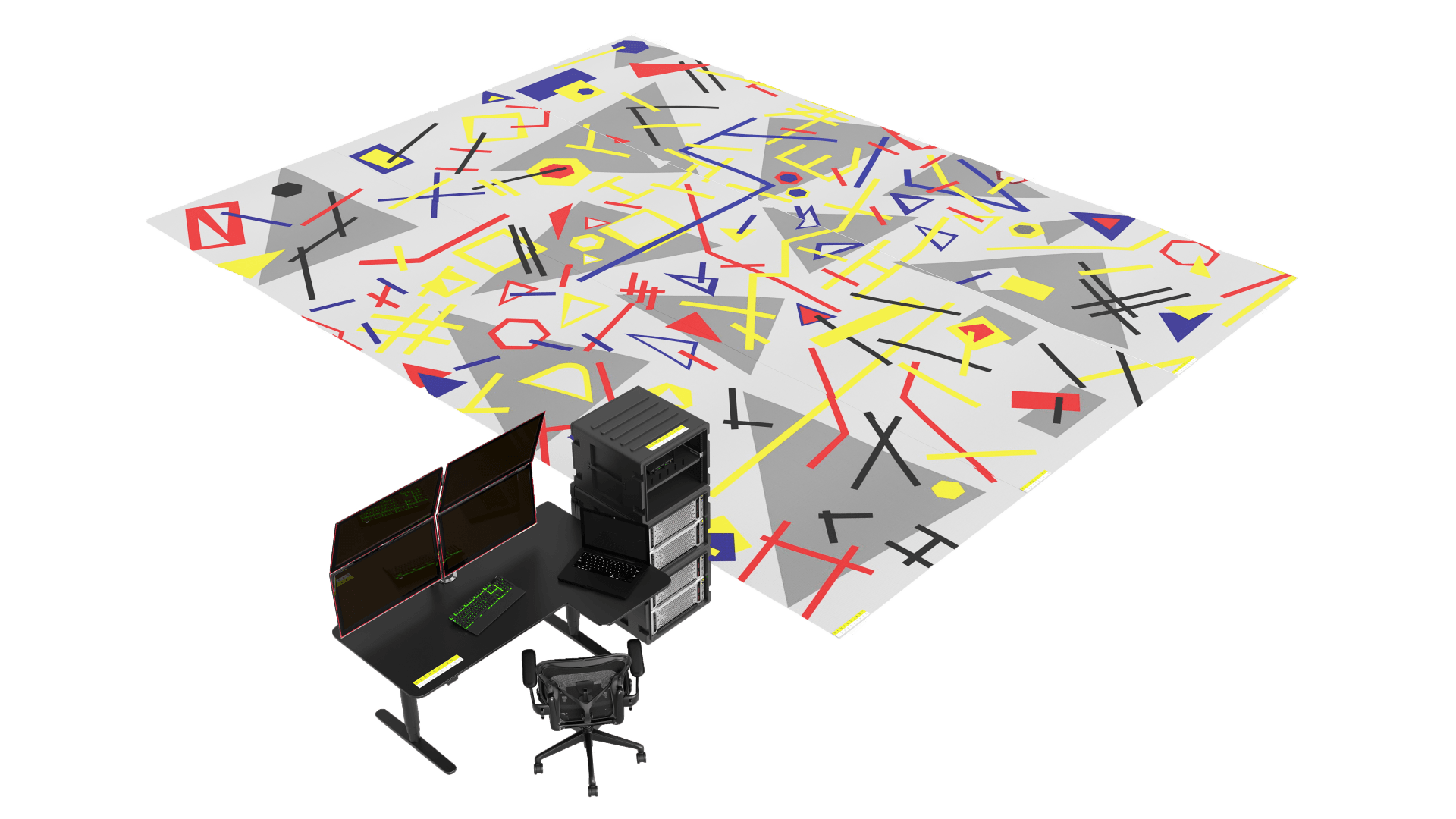Plant Fire Department Case Study
Fire departments have a high operational load. Their training in theoretical basics and practical exercises is already robust in terms of process and organization. Compared to armed forces, the fire department does not usually have to deal with people, but with the forces of nature. Generally it can be stated that fire departments attach a lot of importance to their further training and safety and therefore the evaluation process of self-development has a high attentiveness.

Intended use
Firefighters have atypical to other forces such as police and military regular and repetitive deployment situations, which enables learning processes and integration of trainees in the deployment situations temporally and procedurally. Depending on the threat, there is the possibility to actively integrate trainees into the operational situation and to train them in different competencies, e.g. problem solving. For this reason, training fire departments have a great importance in the training, because they allow the direct confrontation with the operational situations under guidance. If possible, a real situation should always be used for trainees (regardless of the profession) to impart competencies, since the intensity and quality of the imparting of competencies, as well as the depth of imparting, is greatest here.
We know that: What you have seen is less internalized than what you have done.
However, there are locations which either do not allow professional opportunity or do not allow risk-free entry opportunity for the trainees. They are so dangerous, spatially unavailable, or so sensitive that only fully trained forces can assume the responsibility. We know the example in the household as well: we do not give a child of elementary school age the task of driving the family station wagon into the garage either.
Nevertheless, there is a need to proactively introduce trainees to the challenges of the future and enable them to gain confidence in their abilities.
At the same time, we are all trainees all the time, because life always has something new in store for us. Even very experienced firefighters must therefore not give in to routine. Part of professionalism is handling every situation with the greatest possible concentration to accomplish the mission, manage the situation and mitigate the damage.
Because of this fact, both trainees and trainers need to ask themselves how they are going to pre-practice EVERY aspect of their daily business in such a way that it reflects the variance and chaos of daily business on the one hand, and on the other hand, stress-proofs the competencies that are needed.
Special attention will also be given to leaders who have had to establish themselves as leaders in the field through trial and error or non-failure in the past. This process teaches risk aversion and hesitation when courageous intervention is needed. Going to one's own limit, learning about one's limit and that of one's equipment and comrades is an experience that will be rewarding throughout one's life. Unfortunately, training of guides is always limited and local. Mobile and specific training basically has a poor infrastructure, e.g. in the form of seminars, workshops and symposia. A trainer travels to a location, but is not available on duty, which is why only the most important topics manage to activate participants, and by the time he is back in the office, he has forgotten half of them again, which leads to a significant loss of quality due to the multiplier principle.

PROBLEM
Nuclear waste repositories have the problem that their infrastructure consists of tunnels and underground spaces. These have very specific firefighting requirements. For example, regular firefighting equipment cannot simply be moved underground. Furthermore, radioactivity, smoke development and limitation of the resources for damage containment in case of an escalation of the situation play a very important role.
The operation of a repository prohibits active participation in, for example, fire extinguishing exercises or the creation of a leak of radioactive material in order to seal it for training purposes. The problem here is that, in contrast to a regular basement fire in an apartment building where the trainee in the attack squad can also take responsibility, this does not work in this type of special case. In the worst case, this results in an effect that we already know from armed response forces: A cognitive dissonance about what works and what doesn't, due to a lack of real-world experience.
Few people have even extinguished a fire in a nuclear waste repository, let alone seen one. Even the most experienced firefighters run the risk of spending their entire time on duty practicing the wrong tactics and forgetting a very important aspect that would be immediately clear and at least logically anticipated in a real operation. Training must not mutate into a formal service in which it is only assumed that the fire was extinguished under real circumstances on the basis of 90% practice artifices.
SOLUTION
Training in the XR. Due to the detailed representation of the environment, the trainee experiences a true-to-life immersion. Everything that is seen, felt and experienced can be transformed into reality. Especially processes, procedures and competences are the core. In the XR it is possible to simulate the different variances that go along with a situation within a very short time. This includes simulating fire physics.

If you want to use the XR for your training area, you have the option of using a Mobile Team Training System, for example. This is intended for permanent operation at a training location.
The Hypermobile Training System is particularly suitable for very mobile use. It combines fast assembly and disassembly with no restrictions in the training form and quality.

| XR SYSTEM | MTT | HMT |
|---|---|---|
| Size | 49m² - 4000m² | 15m² - 2500m² |
| Assembly time | 50 minutes | 15 minutes |
| Dismantling time | 30 minutes | 10 minutes |
| User | 4+ | 4 |
| Multiuser | Yes | Yes |
| Trainers | 1 | 1 |
| Scenario | Fire fighting underground in nuclear waste storage | Fire fighting underground in nuclear waste storage |
| Special features | Real fire extinguisher and C-pipe | Real fire extinguisher and C-pipe |
| Training target | The firefighter knows the principles of firefighting in the repository. | The firefighter knows the principles of firefighting in the repository. |
| System requirements | Constant light conditions, 220V electricity, from 50m² open area (inside/outside) | Constant light conditions, 220V electricity, from 50m² open area (inside/outside) |
| Extensions | RAMLINK Full-Body Tracking, Biofeedback Tracking, FET (Face & Eye Tracking) | RAMLINK Full-Body Tracking, Biofeedback Tracking, FET (Face & Eye Tracking) |
| Agent tracking | RAMTrigger | RAMTrigger |
| AAA analysis | Radio Analysis, Motion Analysis, Interaction Analysis, Speech Analysis, Awareness Analysis, Security Determination Analysis, Agent Analysis | Radio Analysis, Motion Analysis, Interaction Analysis, Speech Analysis, Awareness Analysis, Security Determination Analysis, Agent Analysis |
| Interaction devices | XR Radio, XR Flex, XR Chainsaw, XR Axe, Hand Tracking, Flashlight, Thermal Imager | XR Radio, XR Flex, XR Chainsaw, XR Axe, Hand Tracking, Flashlight, Thermal Imager |
| Creating the technology | 1 min | 1 min |
| Trainer Training | 16 hours | 16 hours |
| Comfort instructor | High | Low |

RRXR systems are particularly suitable for the acquisition of competencies in augmented reality.
Further examples
-
StormsListenelement 1
Effects such as wind and high winds that develop into storms are completely impossible to represent in traditional training. In particular, the secondary risk of falling trees during an evacuation operation, for example, which occurs completely by chance, is usually impossible to simulate adequately in training.
-
EarthquakeListenelement 2
Earthquake safety and robustness in dealing with earthquakes, or at least mindfulness of the consequences of an earthquake, is specifically relevant. Here, for example, how one's own processes continue to function.
-
CollapsesListenelement 3
In connection with accidents or material fatigue, gas explosions, it is relevant to perform a victim search under rubble. The representation and simulation of stressful operations in extreme situations - even beyond normal working hours - can be well represented in the XR.
-
Biological hazardListenelement 4
Accidents in biological laboratories are of maximum relevance mainly because the extent of damage in the worst case is extreme. An escaped biological agent, disease or epidemic is extremely dangerous not only because of its unclear transmission, but also because of its specific storage form. When the national security of a country is threatened by a situation in a biosafety laboratory, there is no tolerance for error. Even the most experienced controllers have little training in this area due to the low volume of operations and are comparatively limited in their preparation for the various eventualities associated with the substances.
-
Radiological hazard
Leaking radioactive radiation is not only relevant for plant fire departments in the area of nuclear power plants, but also for derailed Castor transports or in uranium mining and processing. Radar radiation can also be harmful to health. What is problematic is the lack of a direct and immediate consequence for one's own actions in life-threatening radioactive areas. And then there is the GAU case - the Chernobyl scenario. How would we solve it today? And how do we train forces for this kind of scenario today.
-
Chemical hazard
The refining and manufacturing process of chemical substances often involves a high risk of fire and explosion. In the past, there have already been major accidents and emergency situations that were too large to be handled with the existing forces. The training of managers also includes making the decision that a situation cannot be controlled. Here, of course, each option for resolution must be found to be negative. The non-solution of a situation can have a very significant impact on an incident commander, but also on involved personnel, the existing hierarchy and damage parties. In what form can we train this dichotomy?
-
Nuclear hazard
Nuclear hazards can arise from accidents or hostile action, for example in the context of a dirty nuclear bomb. For emergency forces, this scenario is completely unknown and therefore comparatively untrained. As trainers we have to make assumptions from the available data from home and abroad, draw conclusions and make logical deductions. In a real training no real alpha, beta or gamma radiation can be applied, no effects on equipment and personnel can be simulated and this changes the transfer ratio of competences from training to reality.
Augmented reality can represent all of these effects in real terms or through surrogate visualizations. For example, the heat of objects can be represented accordingly.
-
Virological hazard
Schreiben Sie eine Beschreibung für dieses Listenelement und fügen Sie Informationen ein, die die Besucher Ihrer Website interessieren. Sie können zum Beispiel die Erfahrung eines Teammitglieds beschreiben, was ein Produkt besonders macht oder eine einzigartige Dienstleistung, die Sie anbieten.
-
Flooding
Tsunamis, floods and inundations in general are large damage events, which often cannot be practiced in their variance. Rescue means and ways, which are practiced in this context cannot convey the violence of the overall impression and therefore fulfill at most only the technical component. Leadership competence, stress management, moral competence, decision-making competence and situation assessment competence are left out.
However, it is precisely these competencies that are highly variant in the above-mentioned situations and must be maximally developed in order to be able to survive in the situations, to use the available time as efficiently as possible and to be maximally effective in the application.
Specifically, the acquisition of competencies in augmented reality is also
-
Use during snow stormsComing soon
-
Forest & bush firesComing soon
-
Heavy machinesComing soon
-
Animal rescueComing soon
-
Mountain rescueComing soon
-
High Altitude RescueComing soon
-
Rescue in rough terrainComing soon
-
Operations at sea & in the airComing soon
-
Fire fighting in warComing soon
-
Deployment under terror threat
In the last 20 years, serious terrorist attacks and threats have occurred frequently and completely unexpectedly, especially in urban areas. Augmented reality allows non-armed forces to generate layers of self-protection competencies that can be used in overwhelming situations.
-
Use in underground areasComing soon
-
Use on oil platformsComing soon
Summary
XR technology closes the hole you didn't know existed. Once used, it outshines everything that has come before. The XR technology does not have to be used as a replacement, but as a complement to proven technologies in order to prepare for the difficult tasks in use without open flanks.


